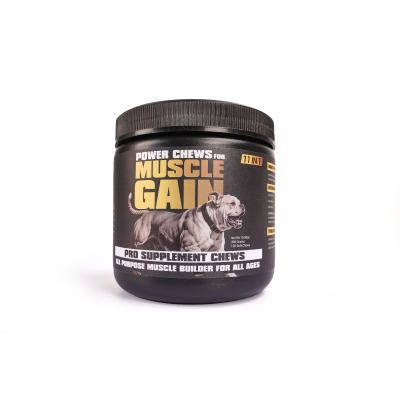Pit Bull Exercise and Nutrition Guide: Building Strength, Protecting Joints, and Maintaining Emotional Balance
As a classic athletic breed, Pit Bulls have three core needs: releasing excess energy, protecting muscles and joints, and maintaining emotional stability. Their exercise should combine resistance and endurance training, while nutrition should emphasize high-quality protein and joint protection to prevent injury and behavioral issues.
I. Exercise Recommendations: Two-Tier Approach — “Basic Energy Burn” and “Advanced Conditioning”
Pit Bulls are muscular and exceptionally resilient. They require at least 1.5–2 hours of physical activity daily. Simple walks are not enough — targeted training is essential.
1. Basic Energy Burn: Prevent Destructive Behavior and Anxiety
Core methods:
Dog treadmill (5–10° incline, 40–50 minutes per session)
Automatic Ball Thrower For Dogs (outdoor fetch, 30 minutes per session)
Benefits:
The treadmill’s incline helps steadily burn leg muscle energy, preventing restlessness from unspent energy.
The “chase-and-retrieve” cycle from ball launchers expends both physical and mental energy, reducing destructive behavior at home.
Note: Avoid long outdoor sessions during hot hours — Pit Bulls’ shorter nasal passages make them prone to overheating. Schedule workouts during early mornings or evenings.
2. Advanced Conditioning: Muscle Definition + Obedience Training
Core methods:
Canine Agility Training Equipment (hurdles, tunnels, jump bars, 3–4 times per week, 20 minutes per session)
Weighted Training (using a dog weight vest ≤10% of body weight, combined with slow walking for 15 minutes)
Benefits:
Agility work enhances coordination and explosive strength, ensuring balanced muscle development.
Weighted training gradually builds resistance, strengthening chest and hind muscles while improving focus and obedience through controlled, low-speed movement.
Note: Start with light weights and short durations. Always warm up for 5 minutes (light walking or stretching) to prevent joint strain or injury.
II. Nutrition Recommendations: Focus on “Muscle Repair” + “Joint Protection”
Due to their high muscle mass and energy output, Pit Bulls need more protein and joint-support nutrients than the average medium or large breed.
1. Core Nutrition: High-Protein Diet + Essential Supplements
Main diet:
Choose formulas with 30–35% protein — look for “chicken meal” or “fish meal” among the first three ingredients, and avoid plant-protein-based foods.
Recommended supplements:
Dog Muscle Gain Supplement: Feed within 1 hour post-exercise. Choose whey or beef protein formulas to aid muscle recovery and prevent post-workout muscle loss.
Glucosamine And Chondroitin For Dogs: Daily with meals to support cartilage repair and protect against hip dysplasia or meniscus injury from high-impact exercise.

Salmon Skin Chews For Dogs: 5–10 ml, 3–4 times weekly. The Omega-3s reduce post-exercise muscle inflammation (preventing soreness) and strengthen the skin barrier, reducing insect-related irritation during outdoor training.
2. Supportive Nutrition: Gut Health + Micronutrient Replenishment
Canine Probiotic Supplement: Twice weekly with meals. Heavy exercise accelerates gut motility, sometimes causing post-exercise diarrhea. Probiotics stabilize intestinal flora and reduce discomfort.
Canine Multivitamin,Best Multivitamin Supplement For Dogs: One tablet daily to replenish B vitamins (anti-fatigue) and vitamin E (protects muscle cells), preventing micronutrient depletion from intense metabolism.
III. Key Precautions: 3 Common Mistakes to Avoid
No heavy feeding or drinking right after intense exercise:
Allow at least 30 minutes of rest before offering small amounts of water. Feed one hour post-exercise to prevent gastric torsion — Pit Bulls’ deep chests make them particularly vulnerable.
Avoid repetitive, single-type workouts:
Relying only on treadmill running can overdevelop certain muscles. Combine with agility drills and interactive play for balanced muscle engagement.
Never use forceful or harsh methods to make them exercise:
Pulling leashes or shouting can cause stress and resistance. Pit Bulls are emotionally sensitive — forced training can damage trust and obedience.















0 Comments